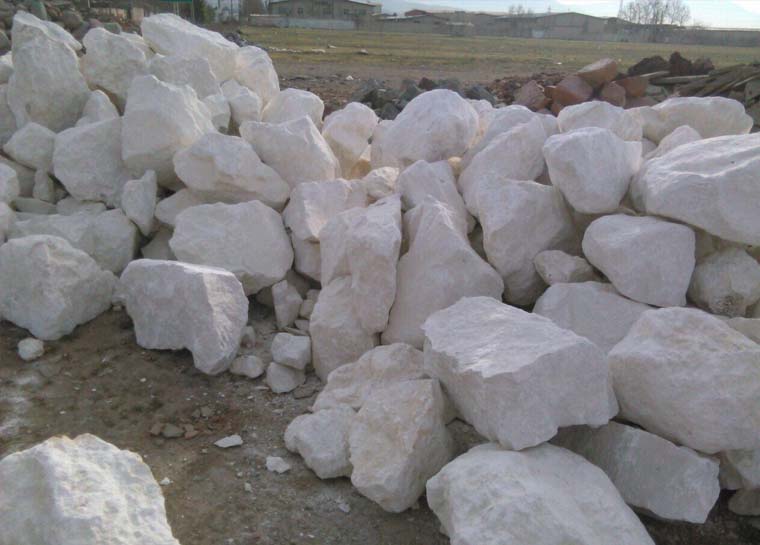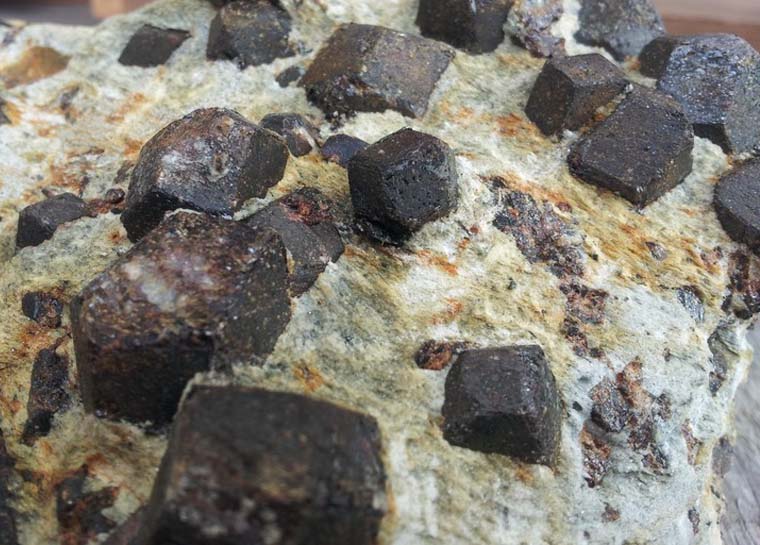Zeolites, crystalline mineral aluminosilicates, and hydrates of alkaline and alkaline earth metals are three-dimensional with a lattice and are divided into two major groups, natural such as clinoptilolite, analysium, lamometite, phyllipsite, mordenite, and synthetic or synthetic, e.g. W, ZSM-5, Zeolon, F, Gamma.
In general, three factors such as structure, texture, chemical composition, as well as the economic value of natural zeolites and modified forms, have made them potential sources in various fields, including the following: Use as a catalyst in oil and petrochemical industries, fire industry, agricultural industry as a fertilizer and increase soil moisture, cleaning municipal, industrial and nuclear wastewater from harmful pollutants such as heavy and toxic metals, absorption and desorption of gases and the like.
Major producers of zeolite are China, Cuba, Japan, the United States and Hungary, which together account for more than 3 million tons of zeolite production worldwide. In Iran, zeolite deposits are scattered in areas such as Miyaneh, Taleghan, southeast of Semnan, Roodehen, Rhine Kerman and some other areas.
Zeolites with excellent capacities in absorbing water and some nutrients needed by plants are well able to provide the required water and prevent wastage of nutrients and fertilizers. Zeolites are also used to absorb and remove environmental pollutants, including heavy and harmful metals from polluted water and municipal and industrial wastewater. Wastewater may contain cations of heavy elements such as zinc, cadmium, copper, iron, mercury, and harmful anions such as cyanides, which can cause a great deal of ecological and environmental damage, and zeolites play a key role in the purification of these cations and anions.
|
Application |
Chemical Formula |
Discovery Year |
Mineral |
|
Absorption of Hydrocarbons |
Na2Al2Si3O10.2H2O |
1758 |
Natrolite |
|
Absorption of Hydrocarbons |
NaCl2Al5H20.6H2O |
1801 |
Thomsonite |
|
Recycle |
(K2,Na2,Ca)(Al2Si6)O16.6H2O |
1824 |
Phillipsite |
|
Absorption of Heavy Metals |
(Na2,Ca)(Al2Si7)O18.7H2O |
1756 |
Stilbite |
|
Absorption of Mercury and Slver – Separation of Alcohol Composition |
(Na2,Ca)(Al2Si4)O12.6H2O |
1772 |
Chabazite |
|
Absorption of Paraffin and Alcohol |
Ca (Al2Si4)O12.4H2O |
1785 |
Lamontite |
|
Lithium Concentrate |
(K2,Na2,Ca)(Al2Si10)O24.7H2O |
1864 |
Mordenite |
|
Rehabilitation of Contaminated Soils – Nitrogen Uptake |
Na6 [(AlO2)6(SiO2)3O].24H2O |
1890 |
Clinoptilolite |
The most famous natural zeolites with their chemical formula, the year of their discovery and use
General Properties of Zeolites
Among the unique properties of zeolites, the following can be mentioned:
A) Cation Exchange
This property is related to poorly bonded ions in zeolite that are easily transported by other ions. Different zeolites have a specific order in terms of cation exchange for different cations. In Clinoptilolite, the substitution decreases from Cs to Mg :
Cs>Rb>K>NH4>Ba>Sr>Na>Ca>Fe>Al>Mg>Li
In Chabazite, substitution is reduced from K to Ca:
Ti>Cs>K>Ag>Rb>NH4>Pb>Na=Ba>Sr>Ca>Li
Zeolite is used for the separation of magnesium and calcium ions in cleaners, fertilizers and soil, animal feed and also for the separation of nitrogen in the form of ammonia and heavy metals in aquaculture, pet food, agricultural wastewater and the separation of NH3, H2S, SO2, CO2 from animal waste, excess gases, saline and polluted natural gas.
B) Molecular filter
If the zeolites are heated at 350 to 400 ° C for several hours, water in the ducts and canal space like them is released and dehydrated zeolites are obtained. The diameter of channel-like spaces is determined by the chemical composition of zeolites. The diameters of these spaces in potassium, sodium and calcium zeolites are 4, 3 and 5 angstroms, respectively. Materials whose molecular dimensions are smaller than the diameter of the zeolite space will be absorbed and those that are larger will be discarded.
Using zeolites, hydrocarbon materials can be separated from each other. The adsorption capacity of some zeolites is up to 30% by weight. Substitution of calcium instead of sodium increases the diameter of zeolite channels by 30%, and substitution of potassium instead of sodium reduces the diameter of the channels. Zeolites can absorb toxic or highly interactive substances, thus making it possible to use the absorbed toxic substances. Zeolites are used in the polymerization of polymers and rubbers as well as in color printing.
C) Adsorption and Desorption
Zeolite channels are ready to be used to adsorb other small molecules after draining water. These small molecules are absorbed inwardly, leaving no room for larger molecules. In the process of competing in the adsorption of molecules, polarized molecules that result from electrostatic interactions and the filling of the framework and floating ions are preferred over other molecules. The size of the effective cavities is controlled by the dimensions of the grid. A zeolite may be altered by ion exchange and the type of adsorption. The adsorption capacity as well as the stability of zeolite increase with the extraction of aluminum ions from its framework. The removed aluminum ions are replaced by hydrogen ions. As a result, the resulting structure is similar to the (oH)4 substituted for SiO4 known in the hydro grant. The adsorbed ions can be expelled by increasing pressure or heat, or other ions can be substituted or added to it, so that heat does not damage this interaction.
D) Water Absorption and Some Organic Compounds
The ability to absorb and lose zeolite water without destroying the matrix can control the moisture level in low humidity areas. By changing the amount of soil moisture, the heat energy of the soil mass also changes significantly. Therefore, temperature fluctuations in wet soils are much less than in dry soils. Zeolites can also carry many insecticides, pesticides and fungicides.
E) Selective absorption
Ionic adsorption and substitution in zeolites is optional. Zeolites absorb molecules that have a constant polar moment in most cases. The radius and geometric shape of the molecule and the voids in the zeolites are important factors in adsorption and substitution. Sodium zeolites can absorb H2O, CO2, SO2, and hydrocarbons that have at least two carbon atoms. Calcium zeolites can also absorb paraffin and alcohol. In Iran, despite the existence of huge resources and reserves of this mineral, so far no significant scientific and research work has been done to investigate the possibility of using them in the various fields mentioned above.
Application of Zeolites in Agriculture
In general, the three factors of chemical structure, frequency and availability, as well as economic value, have provided many applications for zeolites. Despite the abundance of natural zeolites, in many cases it can not compete with artificial zeolites and still the major consumer market is the monopoly of artificial zeolites.
One of the important uses of zeolites is in agriculture; Some zeolites can be added to the soil as ionic fertilizers after ion exchange with the essential nutrient cations needed by plants such as potassium and ammonium. Existing nutrient ions are gradually released from the zeolite phase and made available to plants. In addition to the main nutrient ions, this way the ions needed by plants such as iron, copper, manganese and zinc can be made available to plants. It is possible to use crude zeolites to reduce costs and prices. Zeolites can also be added to fertilizers as diluents and are effective in improving physical condition and maintaining soil moisture.
Zeolites slowly and gradually make fertilizers available to plants through ion exchange reactions or a combination of ion exchange reactions and mineral dissolution reactions. Zeolites such as clinoptilolite can act as a slow release agent to reduce the supply of ammonia fertilizers, as high fertilizers can be toxic to crops and burn their roots. On the other hand, it reduces wastage due to drainage of rainwater. Through the exchange of potassium-saturated clinoptilolite, potassium can be made available to plants with the help of NH4-saturated clinoptilolite.
Recently, it has been found that a mixture of NH4-saturated clinoptilolite; With phosphate rock (apatite) simultaneously and gradually releases N and P and adds to the soil. Zeolites absorb up to 70% of their own weight in water and retain soil moisture without disturbing or sinking.
For plant cultivation, 25% zeolite is added to agricultural soil. For this purpose, approximately 1.5 cm of zeolite is sprinkled on the soil and mixed with the soil with a rake, shovel or any other tool. It has been shown that adding 10% zeolite to agricultural soil leads to soil fertility, aeration and water uptake in the soil. This will lead to sustainable greenery, health and strength of plants. The cost of adding zeolite to the soil will be offset by an increase in crop yields. If chemical or natural fertilizers are mixed with zeolite in a ratio of 50 and dispersed on agricultural lands by fertilizer, it helps to improve soil air conditioning and soil fertility because zeolites place water-soluble fertilizers in their micro-structure and prevent it from coming out of the soil and gradually make it available to the soil again.
Application of Zeolite in Water Treatment
Another use of zeolites is to reduce the hardness of drinking and industrial water. One way to reduce the hardness of water is to change ions, and the most common method is permotite, in which hard water is pressurized through closed filters. In these filters, resin particles are formed from hydrated aluminum silicate -zeolite-, either naturally or artificially(permotite).
Depending on the hardness of the water being treated, zeolites lose their properties over time. In this case, you must continue to work according to the following relationships:
Na2(Zeolite) + CaCl2 = Ca(Zeolite) + 2NaCl
Mg (Zeolite) + 2 NaCl = Na2 (Zeolite) + MgCl2
With the flow of concentrated brine, the calcium and magnesium silicate obtained in the filter was converted back to efficient and revived zeolite. Such filters are now used in Kerman drinking water treatment plant. Instead of permotite, other compounds such as Wofatite and Lewatite can be used.
Zeolites are mainly natural, inexpensive and available compounds for various uses. Properties such as ion adsorption and repellency as well as water adsorption ability have made these minerals more widely used in agriculture and water and wastewater treatment in the future. Improving the physical properties of soils such as adequate moisture storage, as well as their chemical properties such as changes in soil ion exchange capacity have increased the use of zeolites in agriculture and increased the use of chemical fertilizers. On the other hand, the high capacity of zeolites to absorb cationic pollutants has expanded their use in water and wastewater treatment processes.
According to the results, the use of clinoptilolite in the process of water treatment, including industrial and municipal wastewater, as well as in drinking water treatment, as well as various fields of agriculture and animal husbandry is recommended. Inexpensive, safe for soil and environment and high efficiency in removing pollutants can be among the important factors in choosing this natural mineral as a soil conditioner and purifier of polluted water and wastewater in Iran.







